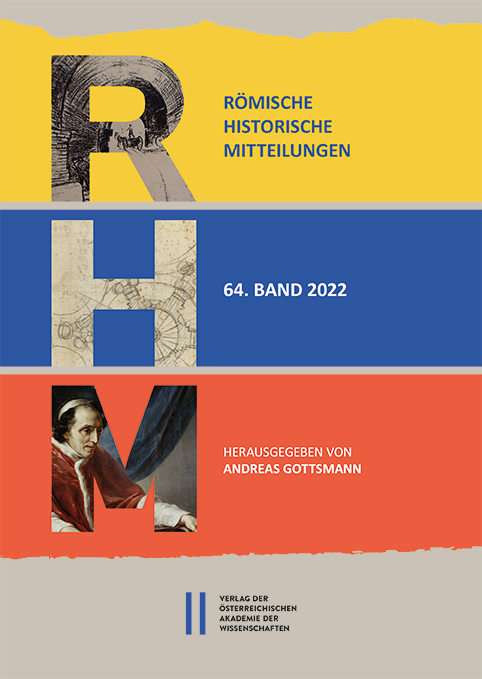
Römische Historische Mitteilungen 64/2022, pp. 205-241, 2022/12/27
The ecclesiastical fathers, who had gathered for the ecumenical council of Trent, provided bishops with precise disciplinary norms to regulate their relations with the Holy See, as well as the activities within their own dioceses. New congregations to control the application of reform decrees within the Curia and the local dioceses were established during the 1570s and 1580s. From the very beginning of the 1570s one of the most powerful and most active was the Sacred Congregation of Bishops and Regulars, charged with the control of religious institutions on the Italian peninsula (including the Papal State), through the institution of the apostolic visitation. Carried out by the apostolic visitator appointed by the Congregation, with the faculties accorded by the Pontiff himself, the inspective work was not limited exclusively to the doctrinal field. Along with the control and the defence of orthodoxy within the diocese, issues concerning the organisation of religious life of Catholic clergy and lay persons were also subjected to investigation. The visitator’s authority and duties included inspections of churches, monasteries, abbeys, priories and ecclesiastical property regardless of their exemptions or privileges. The control was extended to the institutions of controversial jurisdiction like chapters and hospitals, pawnshops, confraternities, scholae, and pious places. This wide sector’s autonomy was vigorously defended by the civil society. By examining archival documentation copied in Registra Episcoporum, Positiones and Visita Apostolica kept in the Vatican Apostolic Archives, the paper reconstructs the early history of the Congregation for Bishops and Regulars and highlights the relations that its secretary and the prefect had with the apostolic visitators sent to Dubrovnik, Dalmatia and Istria – Giovanni Francesco Sormani, Agostino Valier, Cesare de Nores. Activities of Pietro Cedulini and Boniface Darkolica, who were sent to visit Christian communities in Constantinople and southern Hungary, are herewith also analysed.